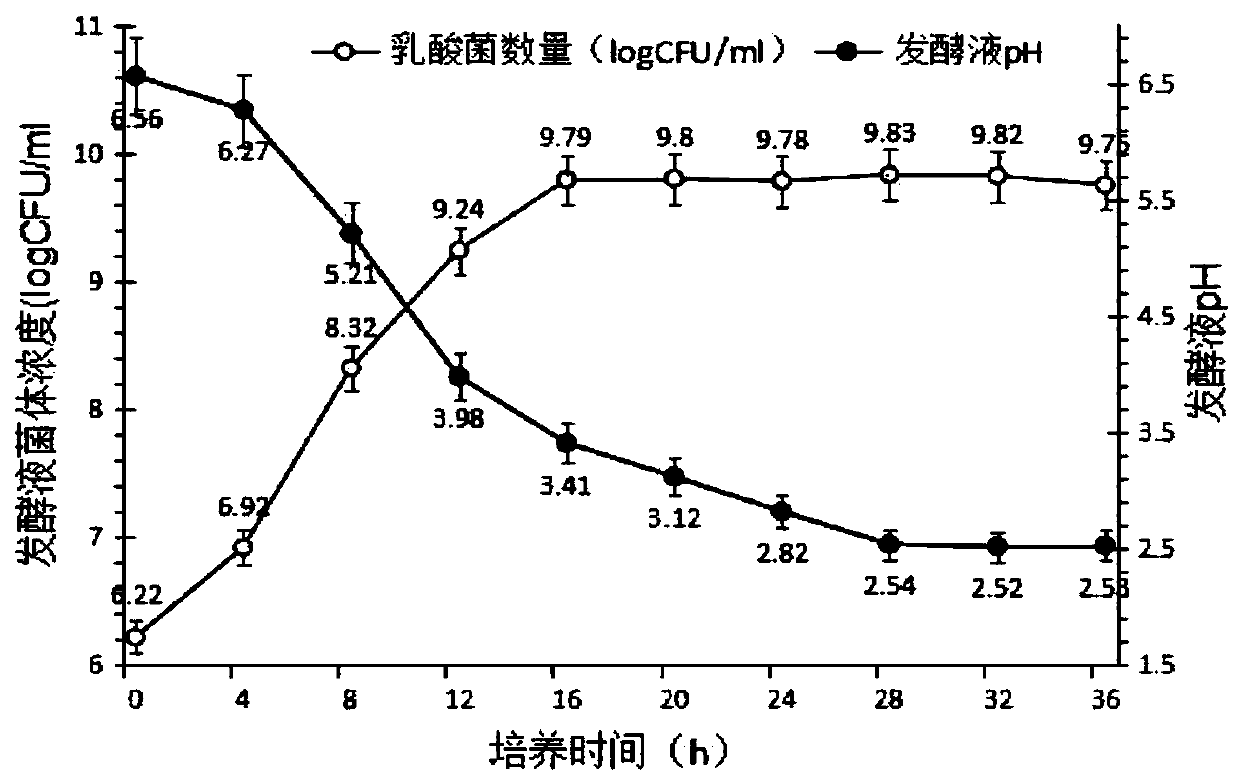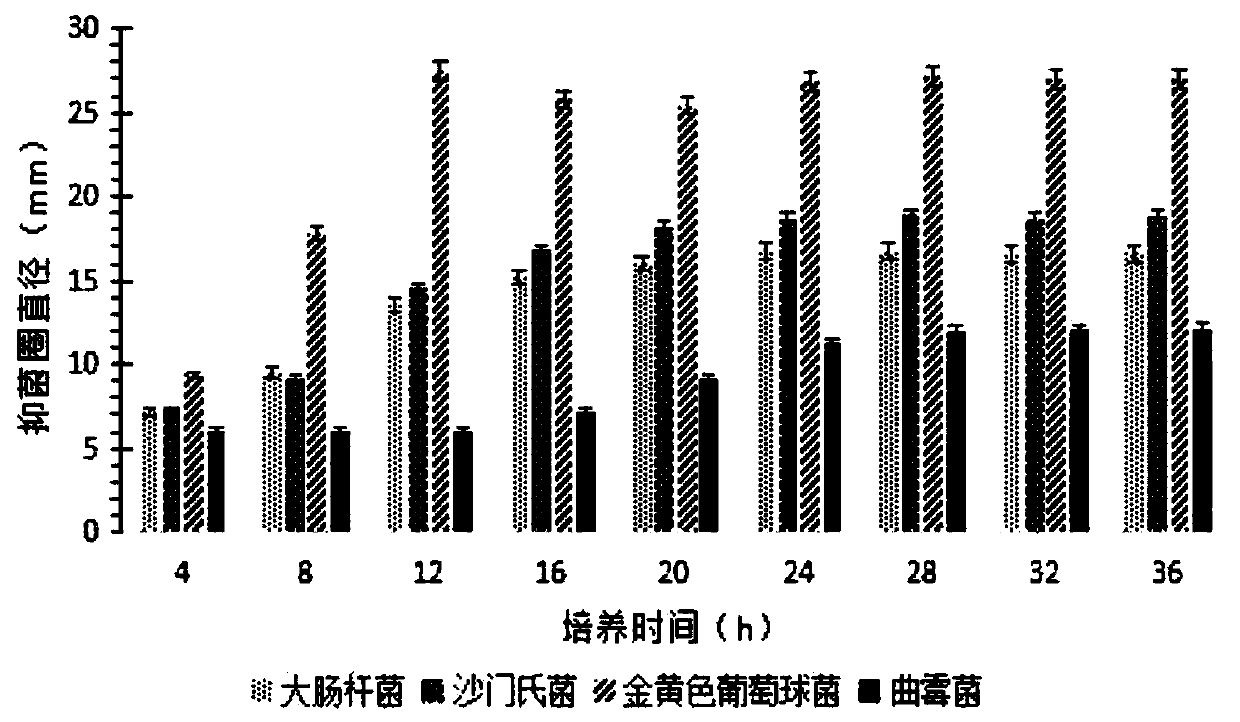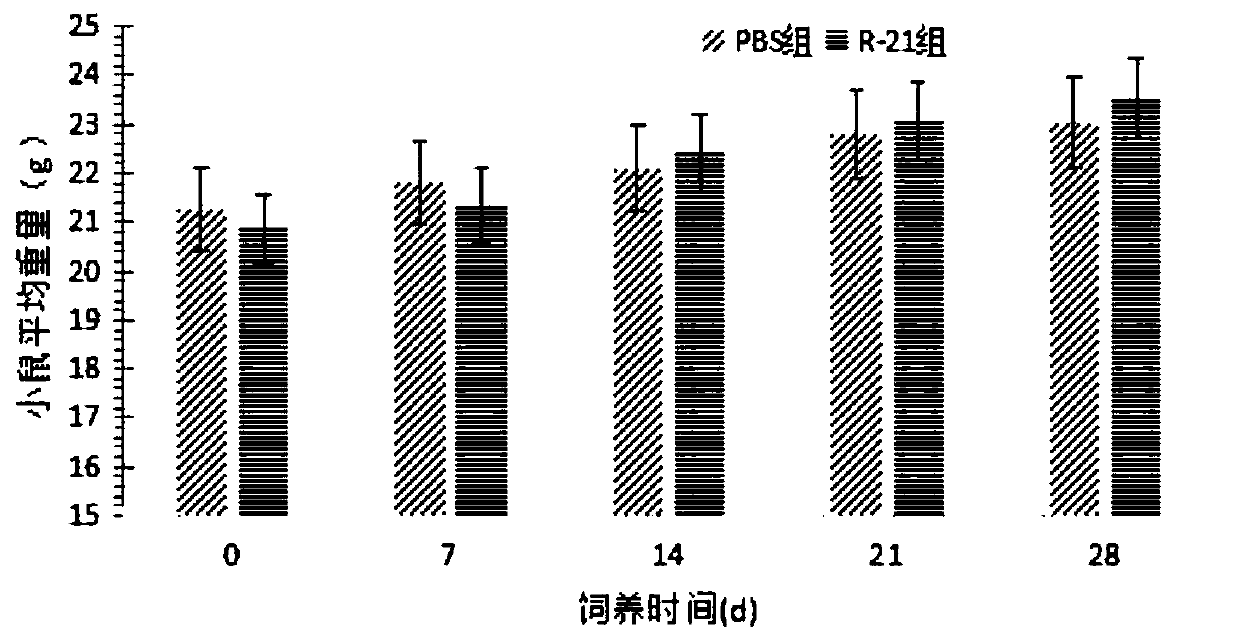Swine-borne lactobacillus plantarum and application thereof
A technology of Lactobacillus plantarum and culture, applied in the field of microorganisms, which can solve the problems of slow acid rise in fermentation, generation of harmful gases or substances, corruption of raw materials, etc., and achieve the effects of prolonging the shelf life, high safety, and early fermentation start
- Summary
- Abstract
- Description
- Claims
- Application Information
AI Technical Summary
Problems solved by technology
Method used
Image
Examples
Embodiment 1
[0027] Example 1 Screening and Identification of Plantarum Lactobacillus R-21 of the Present Invention
[0028] 1. Screening of Lactobacillus plantarum R-21
[0029] 1.1 Sample source
[0030] The bacterial strain provided by the invention is isolated from the intestinal mucosa of free-range pigs in remote mountainous areas of Bijie City, Guizhou Province. The sampled pigs grew robustly, never got sick during the growing period, and never fed any finished feed, live bacteria preparation or antibiotics.
[0031] 1.2 Separation and purification
[0032] The jejunum, ileum, cecum, colon and rectum of the slaughtered pigs were taken in sections, cut open with sterilized dissecting scissors, carefully removed the intestinal contents, and carefully scraped off the intestinal mucosal appendages with an alcohol-sterilized scalpel. Collected in a 5mL sterile centrifuge tube. Take 1g of mucosal appendage sample in 9mL sterilized normal saline, shake and mix well, and take 1mL diluen...
Embodiment 2
[0048] Growth performance and antibacterial test of embodiment 2 lactobacillus plantarum R-21
[0049] 1. Growth performance test
[0050] Take 5ml of R-21 liquid seeds, transfer to 500mL MRS liquid medium, and culture at 37°C for 36h, during which 20ml samples are taken every 4h. Among them, 1ml sample is used for serial dilution, take 10 -5 、10 -6 and 10 -7 200 μl of each of the three gradients was spread on the plate, and the number of viable bacteria was counted after culture, and the concentration of viable bacteria at each time point was calculated; the remaining samples were tested by a pen-type pH meter, centrifuged to take the supernatant, and placed at -20°C Save for later use. The result is as figure 1 As shown, the bacterial concentration was as high as 6.27×10 when cultured to 12h 9 cfu (colony forming unit, cfu) / ml remained relatively stable thereafter, and there was no obvious decline until 36 hours; during the cultivation process, the pH of the fermentati...
Embodiment 3
[0053] The safety test of embodiment 3 Lactobacillus plantarum R-21
[0054] Get the Lactobacillus plantarum R-21 fermented liquid cultivated in Example 2 for 32h, tank-feed 10 male adult Kunming mice of about 20g, each mouse 10 μ L / d, and continuously tank-feed for 28 days, during which each day quantitatively feeds about About 6g of basic feed. Another 10 mice were taken as controls, and fed with PBS solution 10 μL / mouse / d, and other operations were the same as those in the R-21 group. The body weight of the mice was recorded every 7 days, and any adverse reactions were observed. After the experiment, all the mice were killed, and the internal organs were dissected to observe whether there were lesions. The result is as image 3 As shown, the mice fed R-21 fermented liquid in tanks were fed with the same quality of feed, and the average weight gain was faster than that of the control group, and the two groups of test mice did not have any adverse reactions or lesions duri...
PUM
 Login to View More
Login to View More Abstract
Description
Claims
Application Information
 Login to View More
Login to View More - R&D
- Intellectual Property
- Life Sciences
- Materials
- Tech Scout
- Unparalleled Data Quality
- Higher Quality Content
- 60% Fewer Hallucinations
Browse by: Latest US Patents, China's latest patents, Technical Efficacy Thesaurus, Application Domain, Technology Topic, Popular Technical Reports.
© 2025 PatSnap. All rights reserved.Legal|Privacy policy|Modern Slavery Act Transparency Statement|Sitemap|About US| Contact US: help@patsnap.com



